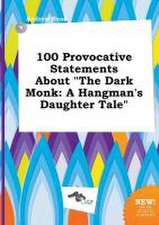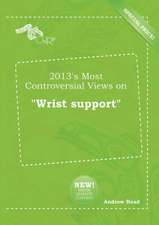New Clinical Genetics
Autor Andrew Read, Dian Donnaien Limba Engleză Paperback – 28 iun 2015
“I LOVED the book. I've never seen anything like it, and I've reviewed a lot of genetics texts. The way that cases are presented throughout is extremely novel.”
“I am greatly pleased with the revisions. In my opinion, there is an increased clarity in the text (which will serve students well), and many welcomed updates based on current literature. Good job!”
“I LIKE IT A LOT!!”
“The book looks good and we will certainly be recommending it for our medical genetics course this autumn.”
“This is a fantastic book that I enjoy so much teaching from.”
“I have been reviewing the book. I think it is a great teaching tool since you can follow a case from beginning to end.”
“I have used this book every year since the first edition was published and it is a perfect fit for my human genetics course. I will definitely continue to use it.”
“It’s great. I will recommend the book as a main text for the medical student class.”
In the few years since the previous edition technical progress, especially the widespread use of whole-genome technologies, has brought many advances in the understanding, diagnosis and treatment of genetic disease. As a result, most chapters have been substantially rewritten and updated to reflect this. The unique structure and format remains the same, but significant new material has been added to cover:
•the widespread use of next-generation sequencing as a routine diagnostic tool
•the checking of a patient’s whole exome for the cause of their problem
•noninvasive prenatal diagnosis by next-generation sequencing of free fetal DNA in the maternal circulation
•a new integrated treatment of epigenetics
•mosaicism, ‘RASopathies’ and disorders of the spliceosome are described in new Disease boxes
•dysmorphology in more detail New Clinical Genetics continues to offer the most innovative case-based approach to modern genetics.
It is used worldwide as a textbook for medical students, but also as an essential guide to the field for genetic counselors, physician assistants, and clinical and nurse geneticists.
Reviews of earlier editions:
“This book provides a wonderful case-based learning environment. There are also self-assessment questions. Students are not given model answers but are provided with guidance on how to work out the correct answers for themselves. Excellent!” Human Genetics
“This book is a very valuable tool that will be used by future geneticists all over Europe and beyond, both as a teaching material and as a source of excellent knowledge.” European Journal of HumanGenetics
Preț: 291.35 lei
Preț vechi: 306.68 lei
-5% Nou
55.75€ • 58.65$ • 46.16£
Carte disponibilă
Livrare economică 24 decembrie 24 - 07 ianuarie 25
Livrare express 10-14 decembrie pentru 60.83 lei
Specificații
ISBN-10: 1907904670
Pagini: 472
Ilustrații: 250
Dimensiuni: 208 x 268 x 23 mm
Greutate: 1.26 kg
Ediția:3rd Edition
Editura: SCION PUBLISHING LTD
Colecția Scion Publishing Ltd.
Cuprins
2. How can a patient's chromosomes be studied?
3. How do genes work?
4. How can a patient's DNA be studied?
5. How can we check a patient's DNA for gene mutations?
6. What do mutations do?
7. What is epigenetics?
8. How do genes affect our metabolism, drug responses and immune system?
9. How do researchers identify genes for mendelian diseases?
10. Why are some conditions common and others rare?
11. When is screening useful?
12. Is cancer genetic?
13. Should we be testing for genetic susceptibility to common diseases?
14. What clinical services are available for families with genetic disorders?
Guidance for self-assessment questions
Glossary
Index
Descriere
HIGHLY COMMENDED IN THE 2016 BMA MEDICAL BOOK AWARDS!
Instructors comments on new, 3rd edition:
"I LOVED the book. I've never seen anything like it, and I've reviewed a lot of genetics texts. The way that cases are presented throughout is extremely novel."
"I am greatly pleased with the revisions. In my opinion, there is an increased clarity in the text (which will serve students well), and many welcomed updates based on current literature. Good job!"
"I LIKE IT A LOT!!"
"The book looks good and we will certainly be recommending it for our medical genetics course this autumn."
"This is a fantastic book that I enjoy so much teaching from."
"I have been reviewing the book. I think it is a great teaching tool since you can follow a case from beginning to end."
"I have used this book every year since the first edition was published and it is a perfect fit for my human genetics course. I will definitely continue to use it."
"It's great. I will recommend the book as a main text for the medical student class."
In the few years since the previous edition of New Clinical Genetics, technical progress, especially the widespread use of whole-genome technologies, has brought many advances in the understanding, diagnosis and treatment of genetic disease. As a result, most chapters have been substantially rewritten and updated to reflect this. The unique structure and format remains the same, but significant new material has been added to cover:
- the widespread use of next-generation sequencing as a routine diagnostic tool
- the checking of a patient's whole exome for the cause of their problem
- noninvasive prenatal diagnosis by next-generation sequencing of free fetal DNA in the maternal circulation
- a new integrated treatment of epigenetics
- mosaicism, RASopathies and disorders of the spliceosome are described in new Disease boxes
- dysmorphology in more detail
New Clinical Genetics continues to offer the most innovative case-based approach to modern genetics. It is used worldwide as a textbook for medical students, but also as an essential guide to the field for genetic counselors, physician assistants, and clinical and nurse geneticists.
Reviews of earlier editions:
"This book provides a wonderful case-based learning environment. There are also self-assessment questions. Students are not given model answers but are provided with guidance on how to work out the correct answers for themselves. Excellent!"
Human Genetics
"This book is a very valuable tool that will be used by future geneticists all over Europe and beyond, both as a teaching material and as a source of excellent knowledge."
European Journal of Human Genetics
Contents
1. What can we learn from a family history?
2. How can a patient's chromosomes be studied?
3. How do genes work?
4. How can a patient's DNA be studied?
5. How can we check a patient's DNA for gene mutations?
6. What do mutations do?
7. What is epigenetics?
8. How do genes affect our metabolism, drug responses and immune system?
9. How do researchers identify genes for mendelian diseases?
10. Why are some conditions common and others rare?
11. When is screening useful?
12. Is cancer genetic?
13. Should we be testing for genetic susceptibility to common diseases?
14. What clinical services are available for families with genetic disorders? Guidance for self-assessment questions Glossary Index




























